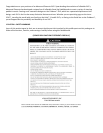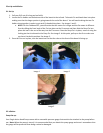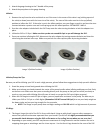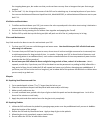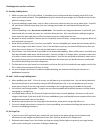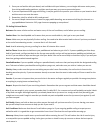3. Once you are familiar with your board, and confident with your balance, you can begin with some easier poses,
from sitting and kneeling positions, and then work your way up to more symmetrical poses.
4. If you are experienced with yoga and SUPing, it may be good to first practice your routine on your board on land
and then move out onto the water.
5. Remember, don’t be afraid to fall in and get wet!
6. For more in depth instructions or lessons on yoga paddle boarding, we recommend utilizing the internet or a
yoga paddleboard instructor. SUP yoga classes are popping up everywhere!
7.3 Surfing Do’s and Don’ts
Be Aware: Be aware of other surfers and water users, of the surf conditions, and of where you are surfing.
Comfort Zone: You should paddle surf in waves that you are comfortable in, don't get in over your head.
Fitness: Make sure you are physically fit when surfing. You need to be able to swim back to shore if you lose your board
at the end of an exhausting session - no mean feat in a 9 foot swell.
Food: As with swimming, do not go surfing for at least 45 minutes after a meal.
Hold or Throw: Know when to hold onto your paddleboard and when to get rid of it. If you are paddling out then keep
hold of your board, you'll get out back to the line up more quickly and you will not put anyone paddling out behind you
at risk. If you are about to wipe-out then get rid of your board. You are far more likely to sustain an injury if you and your
board are getting washed around together.
Patrolled Beaches: If you are paddle surfing on a patrolled beach, make sure that you keep within the designated surfing
area. Take note of where you should be surfing before you go out, and make sure you stick to it when you are out.
Priority: Always make sure that you are not taking anyone else's wave. Remember, the surfer who is closest to the
breaking wave has priority. If you see someone already on a wave then the wave is taken and you'll have to wait for the
next one.
Practice: If you want to improve then you need to be in the water surfing as regularly as possible. No-one got any better
at anything by staying home and watching TV.
Respect: Respect the locals if you are visiting a beach. Remember that you are a guest and that waves should be shared.
Rips: If you are caught in a rip current remember that it's called R.I.P. for a reason and you will probably not make it back
to dry land ever again. Although hopefully you already know that a rip current is a strong current that (normally) goes
straight out to sea and if caught in one that you should not panic and paddle across the rip current (not against it) until
you have escaped.
Surf Buddy: Always surf with at least one other person. Not only will you have more fun if you are sharing your waves
but you will always have someone to help you out if you need it.
Surf Conditions: Make sure that the surf is safe before you go in. If you are going paddle surfing at a spot you are
unfamiliar with it is a good idea to get some advice from a local. Check out the surf spot while warming up.
Warm-up: Always have a quick warm-up and stretch before entering the surf. This will reduce the risk of muscle injury
or cramp whilst you are paddle surfing. It also gives you time to check for any rip currents or where the best spot to
catch waves is.




